Inner Sanctum Mysteries on Blu-ray
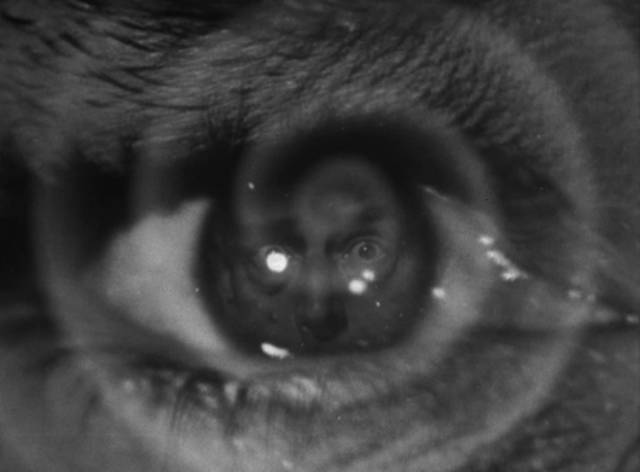
Eureka seems to have signed a deal with Universal. On the heels of their collection of pre-Code Bela Lugosi horrors, they’ve just released a two-disk set of the six Inner Sanctum Mysteries the studio released between 1943 and ’45. Although the title of this series of B-movies was taken from a popular line of books published by Simon & Schuster, it was even better known from the highly successful radio anthology series of the same name. For some reason, no doubt money-related, Universal only licensed the name, not any of the content of either books or series.
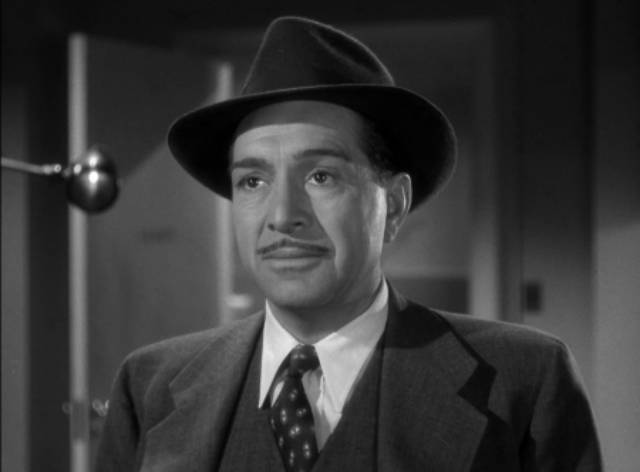
in Reginald Le Borg’s Calling Dr. Death (1943)
In fact, Himan Brown, the producer of the radio show, threatened the studio with an infringement suit if they did anything that might associate the movies with his baby – which meant ditching the familiar creaking door opening and wisecracking host. These were replaced with something a bit more visual – a distorted, disembodied head (David Hoffman) floating in a crystal ball on a library table which ominously informs the audience that “you, yes even you, can commit murder”. The somewhat threadbare nature of the series is signalled by the fact that this intro wasn’t tailored for each story, but used as an unvarying stock opening for the first five movies and dropped entirely for the sixth.
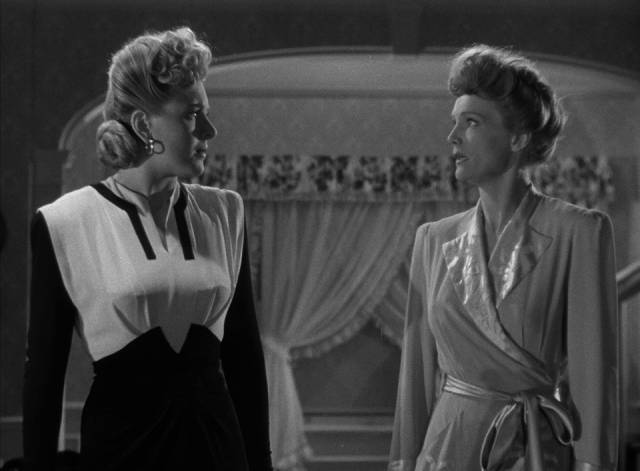
in Reginald Le Borg’s Weird Woman (1943)
Without any of the Simon & Schuster books or NBC radio episodes to draw on, producer Ben Pivar used pretty much anything that came to hand for material, adapting existing scripts and unused stories, and in one case basing an episode on a recently published novel – the first of several adaptations of Fritz Leiber Jr’s Conjure Wife (1943). The piecemeal nature of the sources means that the series lacks a consistent identity beyond the fact that all six movies star Lon Chaney Jr, Universal’s third-string horror star (after Boris Karloff and Bela Lugosi), who was happy to get the job because it got him briefly away from playing monsters (most famously Larry Talbot, the Wolf-Man, but also Frankenstein’s monster, Dracula and the Mummy).
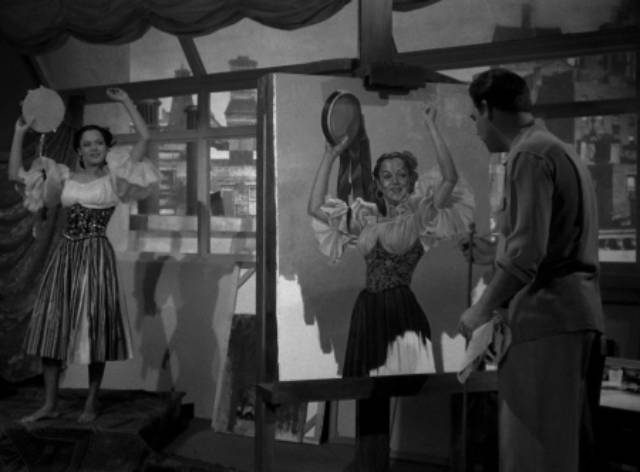
The Inner Sanctum movies gave Chaney an opportunity to stretch, though they also highlighted his limitations as an actor. Overshadowed by his more famous father, Chaney toiled away as a character actor in supporting roles throughout the 1930s until he hit a career high as Lennie in Lewis Milestone’s Of Mice and Men (1939). While he remained a prolific supporting player in westerns during the ’40s and ’50s, he secured his lasting pop-culture reputation in Universal’s 1940s horror movies (which themselves rested shakily on the foundation of the studio’s groundbreaking early ’30s successes in the genre).
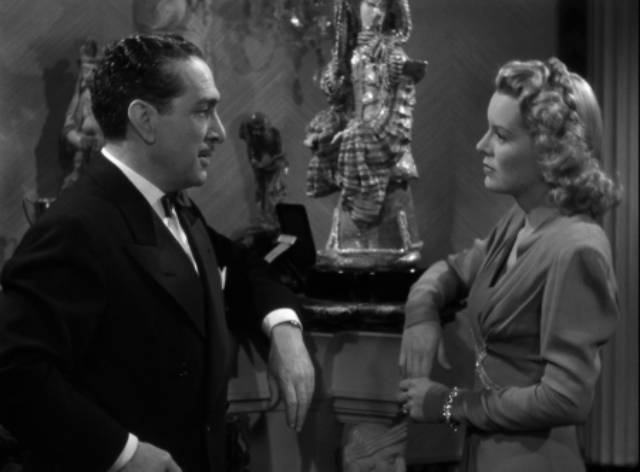
in John Hoffman’s Strange Confession (1945)
Often seen as a big, not too bright guy, Chaney struggles in the Inner Sanctum movies to portray brilliant scientists and intellectuals. These efforts are less than convincing, but he nonetheless remains quite appealing. His main strength, paradoxically, is a sense of vulnerability, sometimes tipping over into a kind of petulant self-pity. While the plots suggest that he may be a killer, his persona frequently elicits sympathy by making him appear the victim.
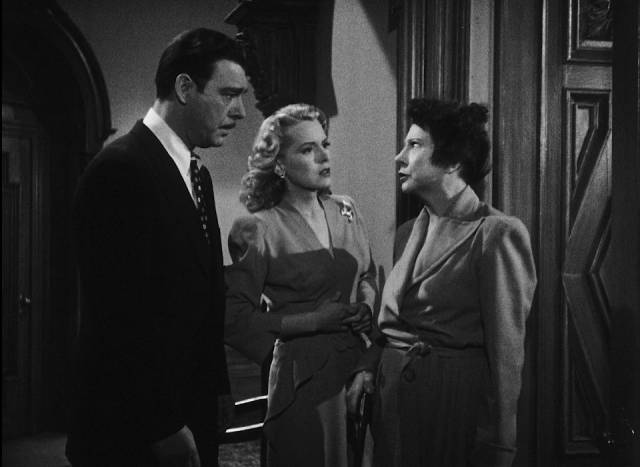
in Wallace Fox’s Pillow of Death (1945)
Pivar was no Val Lewton and none of the movies have the psychological depth and sense of poetry seen in the RKO movies being made at the same time. But, while they didn’t fare well critically when they were released nor subsequently, the Inner Sanctum movies are entertaining and the first three in particular are effective and atmospheric, representing some of the best work by prolific B-movie director Reginald Le Borg. The biggest problem is that they can’t seem to make up their mind about what they’re trying to be – mysteries or horror movies. There are suggestions of the supernatural, but are they real or merely red herrings? Are they explained away in the end or left ambiguous? This uncertainty gives several of the movies a tentativeness, a feeling of not having been completely thought through. A couple even edge towards science fiction with their treatment of medical research.
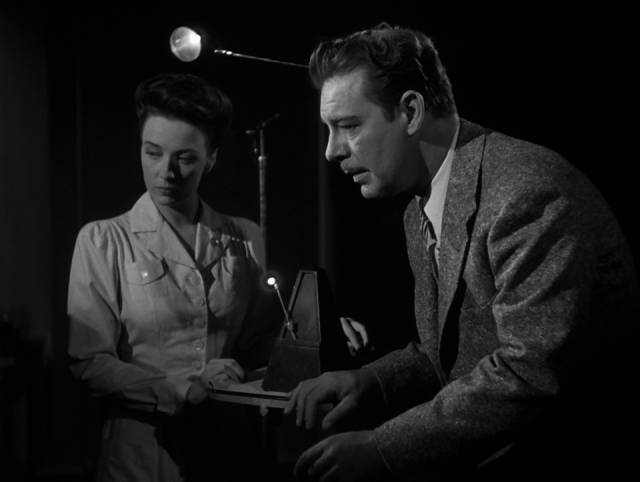
The first film, Calling Dr. Death (1943), has a script by Edward Dein which makes use of a key device from the radio show – a running commentary on events in the form of the protagonist’s inner monologue as he tries to figure out what is happening to him. Chaney is Mark Steele, a psychologist who uses hypnotism to break through to his patients’ subconscious. When he has a blackout and can’t remember what happened during a weekend in which his unfaithful wife was brutally murdered, he turns his technique on himself with the help of his devoted nurse, Stella (Patricia Morrison), in order to discover whether he is in fact a murderer. Chaney draws on the torment he had honed as Larry Talbot, the Wolf Man, preferring to know whether he’s guilty rather than living with uncertainty.
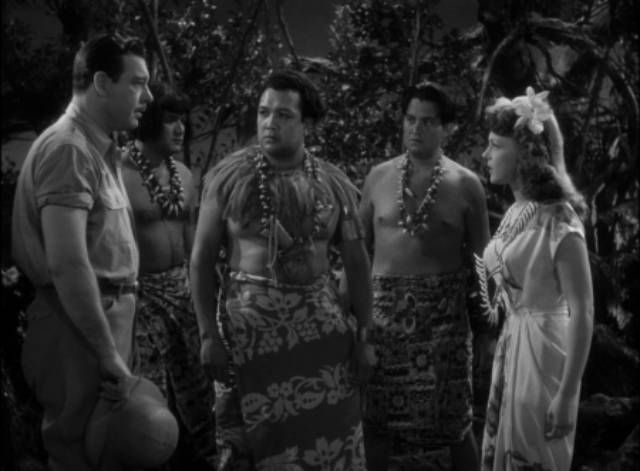
Weird Woman (1943), although stripped down and simplified in Scott Darling’s adaptation of Fritz Leiber’s Conjure Wife, is quite effective, perhaps due to the final script being written by Brenda Weisberg, which gives the movie more of a female point of view. Chaney is Norman Reed, a rather pompous and arrogant academic, so certain of the validity of his own rational perspective that he falls victim to the irrational (which is posited as feminine). On a trip to the South Seas, he meets and falls in love with Paula (Anne Gwynne), who has grown up among natives whose religion is rife with mystical forces. Having married Paula, he returns to his small college town and the petty rivalries of academic politics … not to mention the anger of Ilona Carr (Evelyn Ankers), who was certain she would become the wife of this rising star of the sociology department. Recognizing the threat posed by Ilona, Paula surrounds Norman with protective charms; when he discovers what she’s doing, Norman insists on destroying the charms because he can’t stand his wife acting on primitive superstitions. This immediately results in his life falling apart. His position can only be restored by resorting to Paula’s magical practices, although the boundary between actual magic and the psychological effects of belief remains blurred. Although the nominal protagonist, Norman remains something of a puppet caught up among the conflicting interests of three strong-willed woman – Paula, Ilona and Evelyn Sawtelle (Elizabeth Russell), the bitter wife of Norman’s chief rival for the position of department chair.
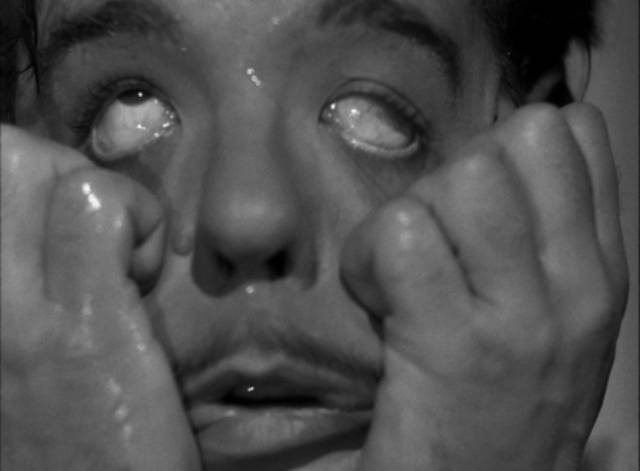
The third movie, Dead Man’s Eyes (1944), could have been an episode of Twilight Zone or Thriller, with the irony of a suspected murderer receiving an eye transplant from his supposed victim. Here Chaney is artist Dave Stuart, working on his finest painting yet, which he believes will finally bring him commercial success. He’s engaged to Heather Hayden (Jean Parker), but his model Tanya (Acquanetta) is in love with him and fiercely jealous. Whether deliberate or inadvertent, after one session Tanya moves bottles around on the shelf above the studio sink and instead of putting eyewash on his eyes, Dave rinses them with acid. Awash in anger and self-pity, he breaks off his engagement and Tanya becomes his devoted care-giver. Told of the long-shot possibility of restoring his sight with cornea transplants, Heather’s father bequeaths his eyes to Dave … and soon ends up murdered. Everything points to Dave, yet the will is clear and he gets the transplants. It appears the operation failed, but Dave actually conceals his restored sight in order to discover who actually killed Pop Hayden (Edward Fielding) and clear himself of suspicion.
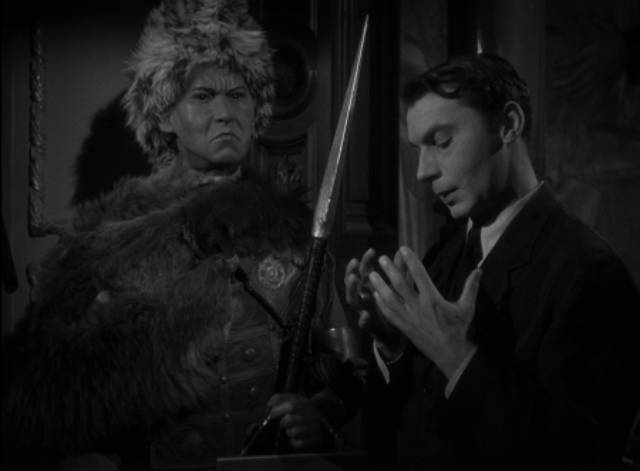
With Le Borg no longer involved, Chaney was apparently unhappy and the final three movies are more uneven. The fourth film had multiple writers and the results fail to come together into a coherent narrative, with a bunch of disparate elements struggling against one another for dominance. Even the title, The Frozen Ghost (Harold Young, 1945), suggests something supernatural which never emerges from a turgid plot. Stage magician Alex Gregor (Chaney) uses hypnotism to give his assistant Maura (Evelyn Ankers) telepathic powers. Challenged by a drunk in the audience, Gregor brings the man on stage and apparently kills him with the power of his mind. Although Gregor is cleared (the man had a bad heart), he’s plagued with guilt and stops performing, retreating for some reason to Mme. Monet’s waxworks. Mme. Monet (Tala Birell) has designs on him, while the creator of the museum’s figures, Rudi Polden (Martin Kosleck), desires her niece Nina (Elena Verdugo). But he’s creepy and Nina is infatuated with Gregor; Rudi stirs up jealousy by telling Mme. Monet that Gregor is after Nina… and so on. There’s a plan between Rudi and Gregor’s business manager, George Keene (Milburn Stone), to frame Gregor for murder, a plot which involves using suspended animation to simulate death (which goes wrong), and bodies being disposed of in the big furnace in the waxworks’ lab. None of the threads ever quite tie together and Martin Kosleck steals the show as the malevolent artist.
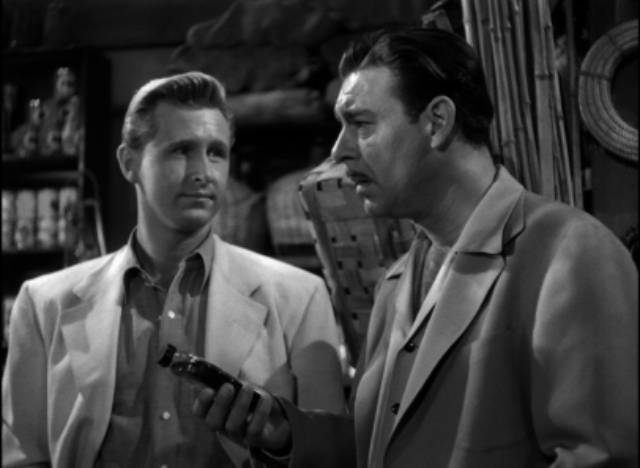
For the fifth movie in the series, Pivar dug up a decade-old script based on a stage play called The Man Who Reclaimed His Head (1934), which was based on a play by Jean Bart. The original, starring Claude Rains, had pacifism as its theme; that political element was removed by scriptwriter M. Coates Webster for the Inner Sanctum version, retitled Strange Confession (John Hoffman, 1945), and replaced with what remains a striking attack on rapacious Capitalism which is willing to literally kill its customers for profit. Chaney is an altruistic chemist named Jeff Carter who toils away in the lab of a pharmaceutical company run by greedy Roger Graham (J. Carrol Naish at his villainous best), who takes credit for all Jeff’s discoveries. Jeff quits in disgust, but is eventually enticed back because his wife Mary (Brenda Joyce) really wants a comfortable middle-class life. Jeff needs one more ingredient for his new miracle drug, one found in South American rain forests, and Graham happily finances an expedition because he wants Mary for himself. In a hurry to get to market, Graham releases the new drug without the vital ingredient, resulting in a lot of deaths during a flu epidemic – including Jeff and Mary’s young son. Realizing he’s been used and his work corrupted, Jeff returns and exacts revenge on Graham. The story is told in flashback as Jeff explains what happened to a lawyer while holding on to a bag containing a particularly grizzly object…
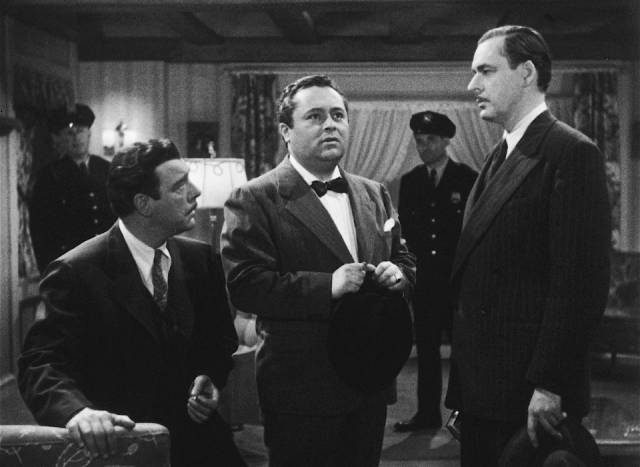
The final movie, lacking the Inner Sanctum prologue and burdened with the particularly silly title Pillow of Death (Wallace Fox, 1945), is a throwback to the classic old dark house mysteries of the ’20s and ’30s, complete with phony supernatural hocus pocus – seance and fake ghosts – and a mansion full of eccentrics and secret passages. Chaney is Wayne Fletcher, an unhappily married lawyer attracted to his young secretary, Donna Kincaid (Brenda Joyce), who lives in an old mansion with her eccentric and disapproving aunts and uncle who really dislike Wayne. Cousins Amelia (Rosalind Ivan) and Belle (Clara Blandick) are under the sway of phony psychic Julian Julian (J. Edward Bromberg) who, after Wayne’s wife is murdered (smothered with a pillow), stages a seance during which the dead wife shows up to accuse Wayne of the murder. Red herrings abound as members of the family also die by being smothered. The twist in this, which turned out to be the final movie in the series, is that Chaney’s character reverses the pattern frequently seen in the previous movies – rather than being innocent but appearing guilty, he initially appears innocent but turns out to be a homicidal madman.
While the series never rises above the level of low-budget program-filler, all six films now have a nostalgic charm, silly perhaps and frequently melodramatically overwrought, but efficiently crafted, atmospherically designed and photographed, and quite well acted by the studio’s stock company. The Eureka two-disk region B set duplicates the contents of a region A edition from Mill Creek, with three commentaries and three featurettes (one on the radio series, another on the films, plus an interview with actor Martin Kosleck) totalling an hour, but Eureka also adds a 27-minute interview with Kim Newman, and apparently considerably improves the transfer of Pillow of Death, which was mastered from a much poorer source than the other five. All in all, a very nice package for fans of classic B-movie horror and mysteries.
Comments